Television programmes on agricultural topics are attracting a lot of viewers in Bangladesh. It is also inspiring youth to take up agriculture as an important profession. But the potential of these programmes could be significantly enhanced if the producers consider making some improvements in the programme content and delivery format, argues Dr Wais Kabir in this blog.
CONTEXT
Television programmes on agriculture are widely regarded as a significant tool of agriculture extension because they can reach a huge number of farmers all at once. These programmes can provide them with knowledge and information relating to many aspects of agricultural production, processing and marketing. It is encouraging to see many TV channels in Bangladesh presenting agricultural programmes which are attracting viewers from all sections of life. Inspired by Mati o Manush (Soil and People) programme from the mid-1980s (Box 1) in the public sector Bangladesh Television, several other private channels, have started their own agricultural programmes. Currently, Bangladesh has 31 TV channels broadcasting either agricultural reports or dedicated programmes; two are from the government and rest are from the private sector. Names of some of these TV channels and their year of establishment are provided in Table 1 for reference.
| Box 1: Mati O Manush Mati O Manush was originally called Amar Desh and it was a pioneering television programme on Bangladesh Television. The programme started in 1978 and covered a wide range of programmes on the rural livelihood-based economy, including agriculture. The programme was renamed as Mati O Manush in 1980 and was dedicated to agriculture. It is one of the most popular and oldest programmes of Bangladesh Television. Afterwards, most television channels produced programmes on agriculture that was based on the Mati O Manush model. This programme was able to successfully impact television viewers on agriculture and attracted intellectuals and young professionals in electronic media. |
TV channels have dedicated programmes on agriculture (Table 1) such as Mati o Manush, Banglar Krishi, Krishi Dibanishi, Hridoye Mati o Manush, Hridoye Mati o Manusher Dak, Fire Cholo Matir Tane, Shamol Bangla, Shabuj Bangla, Deepto Krishi, Matir Shubash, Shonali Din, Krishi Jog, Khamarbari etc., and all are in Bangla language (Choudhury et al. 2020). These agricultural programmes have created awareness about the recent developments in agriculture and aided in development of skillful farmers and concerned stakeholders. Apart from the dedicated agricultural programmes discussed, the TV news programmes also cover information related to agricultural production constraints and successes. The prime focus of most of the programmes is on application of agricultural technologies/success stories from different parts of the country. One of these channels (Channel 1) and another news-based channel (Ekattor) broadcast separate agriculture bulletins.[1]
Table 1. TV channels in Bangladesh showing agricultural programmes
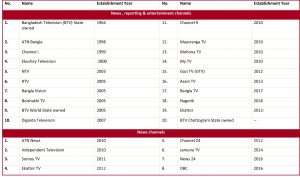 Source: Alam and Haque (2014)
Source: Alam and Haque (2014)
Some dedicated programmes are telecast weekly along with Question and Answer sessions. The Ministry of Agriculture, Bangladesh, also broadcasts agricultural news and daily programmes in the name of Banglar Krishi (Agri of Bangla) on TV channels. The Agriculture Information Service (AIS) under this ministry covers TV programmes on different agriculture development initiatives. In the current COVID-19 pandemic situation, many viewers in rural and urban areas are confined at home and are spending more time watching television.
CONTENT OF AGRICULTURAL PROGRAMMES
The contents of a few of these agricultural programmes were appreciated at national and international levels, which brought recognition for these TV channels and media personalities that encouraged them to work further on broadcasting and improvising more agricultural programmes. Although there is an impressive record of agricultural programmes on TV, there are some concerns that need to be taken care of with regard to the content of programmes. Most of these programmes had similar content – role of agriculture in the economy of the country, more crop related information with limited focus on market oportunities, pricing or agri-business aspects. It covered a narrow range of topics, thus limiting its potential. Seasonal crop-based reporting is quite visible on these channels. The content is covered in the form of news, discussions and sponsored programmes on agriculture-related aspects. There is a need to broaden the content of these agricultural programmes considering the fact that agriculture is going beyond rural livelihood and production. Moreover, many other actors are involved in agriculture now, including legal, business, post-harvest management, supply chain and so on.
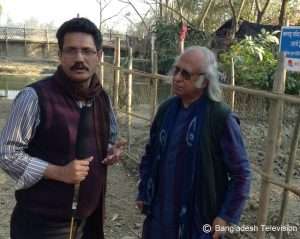 Dr Kazi Khaliquzzaman Ahmad, Renowned Economist being interviewed by Mr Rezaul Karim Siddigue, Anchor Mati O Manush, Bangladesh
Dr Kazi Khaliquzzaman Ahmad, Renowned Economist being interviewed by Mr Rezaul Karim Siddigue, Anchor Mati O Manush, Bangladesh
To understand the different perspectives on agricultural programmes telecasted in Bangladesh, I interacted with some experts who deal with development and broadcasting of agricultural programmes. Some of these discussions revealed that company management as well as production managers in most of the TV channels are not interested in investing additional time in understanding the topic and resources, especially logistics that are needed for developing more innovative agricultural programmes as these programmes are not that profitable to the channel. Meanwhile, some hard truths about content being telecast were also revealed during these discussions, such as those given below.
- Usually, success stories are presented. Success has come about through the application of one or two production technologies without considering either the spatial and temporal variations of the technological package or the total package of practices that led to the success story.
- The risks associated with technology are not usually demonstrated. Many youngsters watching these ‘success stories’ on television get inspired by the potential of getting higher income. So they invest their money (some of it coming through remittances from abroad) in farming without fully realising the risks (natural disasters, pest and disease management, market fluctuations), and without the necessary agri-business expertise, to be successful in such an enterprise.
- Talk shows are usually organized with public research and extension personnel and there is no critical analysis of the outcomes of applying new technologies, especially on aspects related to marketing and income of farmers. Only yield is highlighted and agricultural programmes are still traditional and follow a monologue format. While many other news programmes follow a panel discussion format that allows a more thorough discussion on the socio economic aspects and benefits of any new information, agricultural programmes are still traditional and follow a monologue format. While there exists a wide range of perspectives and pathways in agriculture, this is less evident in the agricultural programmes telecasted.
- The TV programmes sponsored by companies are usually limited to the format suggested by the companies with little or no scope for highlighting risks. This is mostly designed to propagate public attention on the company’s products, especially agro-inputs.
- Reporting with partial science-based findings affect the production process and also creates panic among consumers (fear of adding ripening agents in fruits, antibiotic use in animals, adulterated feed, etc.). TV programs may take opportunity of distnguishing facts and fiction prevailing among the producers and consumers.
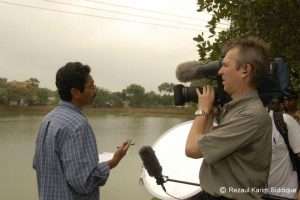 Preparation for shooting a documentary on Mati o Manush
Preparation for shooting a documentary on Mati o Manush
WHAT NEEDS TO CHANGE?
Programme Development
To exploit the full potential of television as an important extension channel, a few changes have to be made in the way agricultural programmes are made for Television (Table 2).
Table 2. Shift needed in agricultural TV programmes
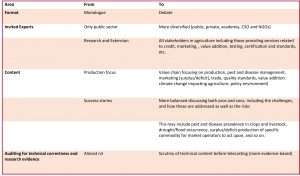 Professionalising the production of agricultural programmes
Professionalising the production of agricultural programmes
A number of institutions in Bangladesh offer formal training in media. These include:
- National Institute of Mass Communication under the Ministry of Information;
- Mass Communication and Journalism of University of Dhaka;
- The Department of Mass Communication and Journalism (MCJ) of Rajshahi University;
- Journalism and Media Studies, Jahangir Nagar University;
- Department of Mass Communication and Journalism, Jagannath University;
- Bangladesh Cinema and Television Institute under the Ministry of Information.
Many of the young staff in the television industry are graduates of these institutions and they have advanced knowledge as well as the skills needed by the media industry. But there are only few professionals having a background in agriculture as well as media. Considering the importance of agricultural extension to accelerate the process of adoption of new knowledge by farmers, it is important to establish either faculty specialized in agricultural media production under extension education in the agricultural universities or develop collaborative programmes by the Agricultural Universities with some of the above mentioned institutions that specialize in media.
IMPACT ON FARMER BEHAVIOUR
There are several cases of TV programmes influencing farmers to adopt new practices. The programmes are also inspiring several youngsters and new entrepreneurs to invest in farming and other allied enterprises including animal rearing, culture fisheries, value addition, processing, etc. The programmes are also attracting youth to return to the villages and invest in their own lands instead of seeking jobs in the cities which are becoming more crowded and polluted. Overall, the programmes relating to farming in Bangladesh and abroad has changed the perception of agriculture as a poor or uneducated man’s occupation. With advances in agro-meteorology, weather forecasts have become more accurate. Collaboration between officials of Agriculture and Meteorology has improved recently. Considering the wide diversity of production environments in the country, TV channels should get more involved with farm advisory services with predicted values of weather parameters in specific locations or regions.
However, there is need for more research on the impact of television programmes on changes in farmer behaviour. Currently only very few empirical studies are available in this area. Alam and Haque (2014) noted that Mati O Manush agricultural programmes broadcasted by BTV were preferred by the majority of respondents in their survey. The study found the following programmes as preferred by farmers which are given here.
- Mati O Manush (BTV);
- Krishi Dibanishi broadcasted by BTV and Channel I;
- Desh O Jonopoder Khobor, Hridoye Mati O Manusher Dak, Hridoye Mati o Manush broadcasted by BTV, Channel I (equal preference for all three).
Variations in the contents of programmes and fulfilling the expectations of farmers could be reasons for the highest preference towards these programmes. The study conducted by Chaudhury et al. (2020) showed that farmers have a moderately favourable attitude towards agricultural programmes and there is need for telecasting relevant information by TV channels if the attitude of farmers towards agricultural programmes are to be boosted.
IMPACT ON POLICY ACTORS
Some of the agricultural programmes on television are also informing the policy makers on the magnitude of some of the field problems and the importance of taking urgent action. These include aspects related to risks to existing crops due to pest attack or natural disasters, embankment failure in the river flood plains, salinity ingression in the coastal tidal zone, declining groundwater as a result of over exploitation, environmental degradation affecting production, loss of biodiversity as a result of mono cropping, food safety, nutrition and food habits, declining profit margins from agriculture, etc.
END NOTE
To enhance the contribution of agricultural TV programmes to Bangladesh’s agriculture, firstly, we need to have more empirical studies on their impact on farmer behavior, farm practice and also viewer preferences.
Secondly, we also need to broaden the scope of agricultural programmes in television beyond crop production technologies. The programmes should lay equal emphasis on other diversified rural sectors and enterprises involving a wide range of experts from the public, private, CSOs, educationist, and NGO sectors.
Thirdly, there should be more public discussions on agriculture and allied sectors, including topics related to livelihood improvement, quality investment, enhancing human productivity, small farm mechanization, farm income, food safety, nutrition, impact of trade regimes, supporting adaptation to climate change, etc. To do justice to these topics, the programmes should invite people with different views and expertise on these themes.
Fourthly, the agricultural universities are hub of knowledge and farm technologies which often remain under-utilized due to lesser linkage with extension mechanism. TV programs may take adventage of the farm solutions for users. There should be more education and training opportunities to develop professionals with both agriculture and media expertise. It is high time that we start specific programmes in agricultural universities in this area.
Finally, there needs to be a mechanism to review the contents of television programmes in agriculture, and also to guide and provide public support for the development of quality programmes as discussed in the blog.
REFERENCES
Choudhury FH, Amin MR, Islam MA and Baishakhy SD. 2019. Attitude of farmers towards television programmes in perceiving agricultural information. Bangladesh Journal of Extension Education 31(1&2):171-176.
Alam Mohammed Khalid and Haque Md. Armanul. 2014. Contribution of television channels in disseminating agricultural information for the agricultural development of Bangladesh: A case study. Library Philosophy and Practice (e-journal). 1048. https://digitalcommons.unl.edu/libphilprac/1048.
ACKNOWLEDGEMENT
My sincere thanks to Mr Rezaul Karim Siddique, Anchor, Mati O Manush, Bangladesh Television; and Mr Mir Emdad Ali, Producer & Anchor, Sonali din, ATN Bangla, for their inputs to this blog.
FootNote
[1]http://www.somashte.org/works/privatetvagri-shows/

Dr Wais Kabir is Former Executive Director at Krishi Gobeshona Foundation, Bangladesh and Former Executive Chairman, Bangladesh Agricultural Research Council Bangladesh (waiskabir@hotmail.com)

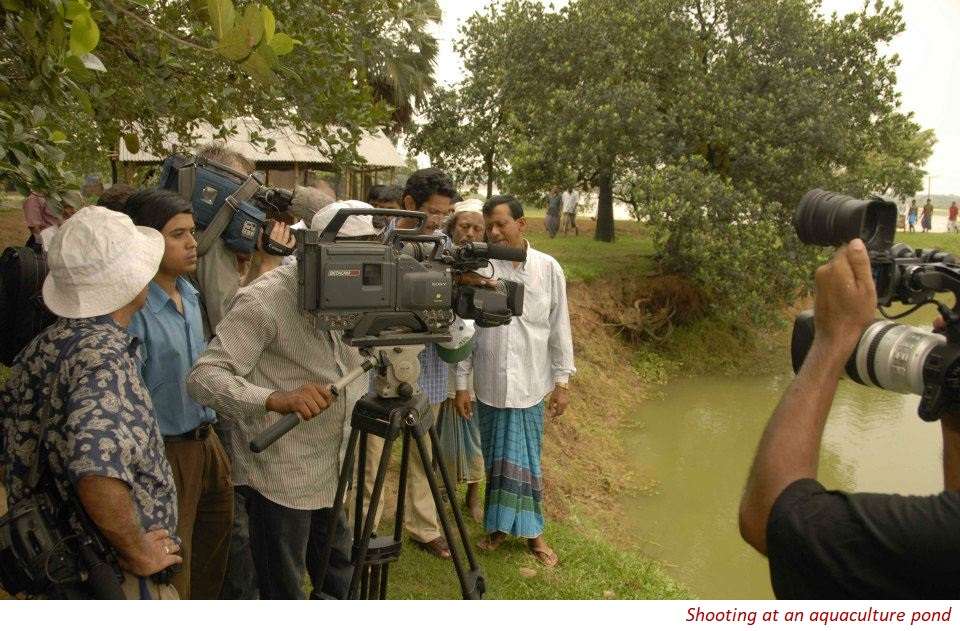

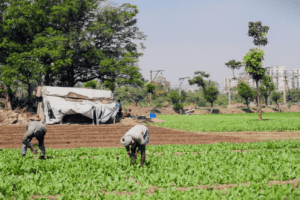

It is interesting to see how the author had taken us through the television programmes on agricultural topics. Thank you, sir, for giving an excellent overview of Bangladesh’s public and private sector channels, the drawbacks, and the scope of improvement. I wish to share a paper not too similar but interesting from Malasia to add to the readers of this blog https://academicjournals.org/article/article1380895095_Nazari%20and%20Hassan.pdf
Thank you sir, you have exposes an excellent understanding of agro-based TV programs production system in Bangladesh. It’s a complete guideline for a farm TV show production planner. You have also solicit the sponsor agencies to take more active role for producing agro-based TV programs. Unfortunately often we see sponsors agencies are interested to sponsor for entertainment TV programs instead of Agro-based TV programs. To produce a quality TV program sponsor is a must. Hope for the best and doors will be open through your continuous efforts.